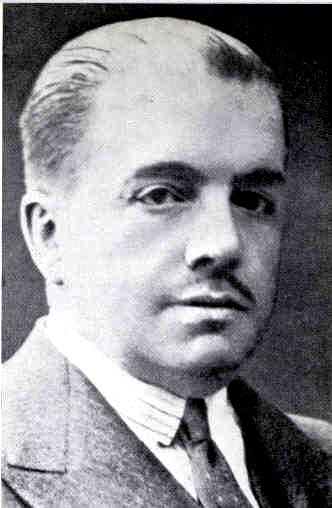Sergei Diaghilev (1872-1929)

Sergei Diaghilev was born March 31, 1872 and died August 19, 1929. As a law student he came to St. Petersburg where he became co-founder of the progressive art magazine Mir Iskusstva (The World of Art) in 1899. The same year he was appointed artistic adviser of the Maryinsky Theatre. He resigned this post in 1901 and when the magazine stopped publishing in 1904, he concentrated on organizing exhibitions of Russian art in St. Petersburg and Paris. In 1908 he brought a production of "Boris Godunov" to Paris, with the famous singer, Feodor Chaliapin. In 1909 he brought to Paris a season of opera and ballet and, with the best dancers from the Maryinsky, he scored a great success. Repeat visits in the following years resulted in the formation of the Ballets Russes in 1911 as an independent private company, which he directed until his death in 1929.
Although Diaghilev reformed European ballet. His company was often on the verge of bankruptcy. He never returned to Russia after the 1917 revolution. In fact, Diaghilev's Ballets Russes never performed in Russia. With his infallible flair, and his immaculate taste he anticipated what the audiences wanted. Instead of a full-length ballets he gave them Aurora's Wedding, and the second act of "Swan Lake," "Les Sylphides," "La Boutique Fantasque," "Les Biches," "Jeux," and many more. Thanks to him ballet regained its artistic integrity.
Prior to 1909 an independent ballet company was almost unheard of. Most ballet companies were part of an opera company or was subsidized by the court or the ruling power. The Paris Opera was the home of the ballet, even in Russia the ballet was part of the opera. In 1909 when Diaghileff decided to bring a small company of dancers to Paris he did this by bringing the great opera star Chaliapin to share the program. Both people in Russia and Paris thought that he was crazy. Diaghileff didn't had an easy time getting enough money to get the this project to Paris. Once he accomplished the first season in Paris he had to do this during the dancers yearly time off. He had to get them back to St. Petrersburg before their season started.
Diaghilev collaborated with the most famous artists, composers and dancers of the period. Artists like Alexandre Benois, Leon Bakst, Nicolas Roerich, Pablo Picasso, Henri Matisse. He got composers such as Igor Stravinsky, Sergei Prokofiev, Maurice Ravel, Claude Debussey and Erik Satie to name a few, to compose new music for the ballet. He encouraged Mikhail Fokine, Vaslav Nijinsky, Leonide Massine, Bronislava Nijinska and George Balanchine to choreograph new ballets for the company.
Diaghileff never went to sleep without thinking of some way to get enough money to spawn a new ballet. After his death in 1929 the company that he had worked so hard to create disbanded. It took until 1933 before another company could get the funding and leadership to start a new season, using many of the dancers that had been with Diaghilff's Ballets Russes. There where a number of companies springing up, some with more success than others. Bad management and the lack of funding was the reason that these ballet companies fell by the way side.
We are seeing the same thing happening at this time in the United States of American. The companies that are thriving are the ballet companies subsidized by their home country i.e. Great Britian's The Royal Ballet, The Royal Danish Ballet, and etc. A number of ballet companies are doing very well in Germany all backed by the Germany Goverment, even though they are in financial trouble.
We have the National Endowment the Arts that helps, but many in Congress feel that NEA is a waste of money. A few years ago we had a government sponsored program called CETA that put more dancers to work than ever before in this country, but the president at that time thought that we should stop CETA, he was the same President that said ketchup was a vegetable.
If we want good ballet in this country we must get the govermment involved in its support. Russia is so hard hit financially that ballet in Russia is having a difficult time and many dancers are having to leave their homeland to dance elsewhere. The Ballet wasn't the reason for this problem.
It would be difficult to imagine what ballet would be today had Diaghilev not had the vision and energy to bring the Russian ballet to Paris in 1909. We who are enjoying ballet as dancers or as members of the audience owe him a lot. Diaghiliff and the dancers that left Russia with Diaghiliff and became the teachers that made American dancers some of the best in the world.
Without Sergei Diaghilev we would be here, but we would not be dancing.
(First published October 1994)